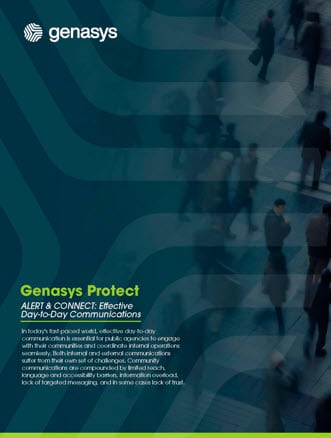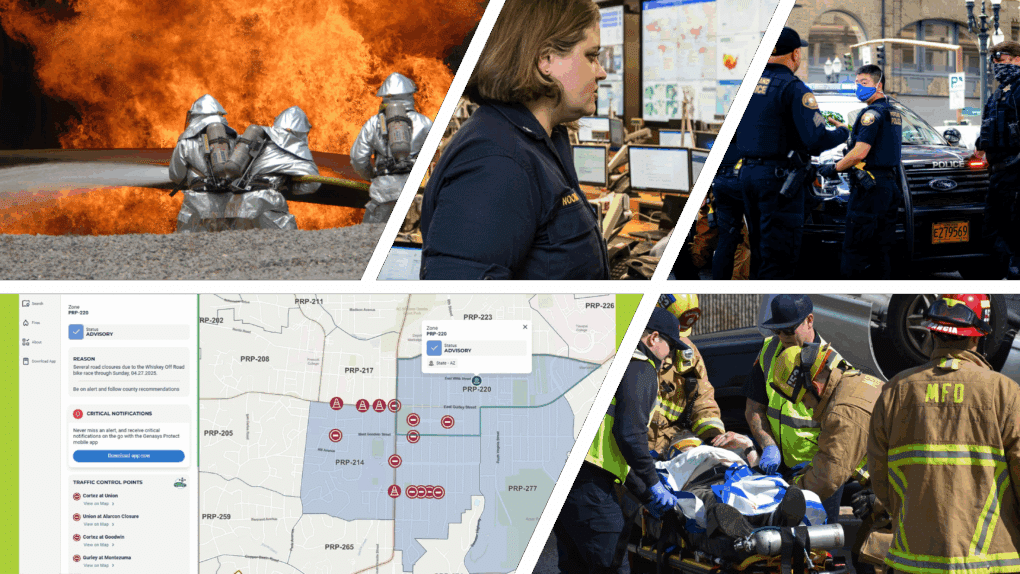The Integrated Public Alert and Warning System (IPAWS) is an architecture that unifies the United States’ Emergency Alert System, National Warning System, Wireless Emergency Alerts, and NOAA Weather Radio under a single platform. IPAWS was designed to modernize these systems by enabling alerts to be aggregated over a network and distributed to the appropriate system for public dissemination.
WEA (Wireless Emergency Alerts, formerly known as the Commercial Mobile Alert System or CMAS) is a subsystem of IPAWS that allows the issuing authority to disseminate urgent alerts to cellphones in a defined geographic area – without having recipients opt into the notification system. A typical example of WEA alerts you see most often are Amber or Silver Alerts – for child abductions or lost senior citizens. WEA is currently being extensively adopted as an emergency communication tool across cities and counties in the USA.
The ability to issue geographically defined alerts without having the public opt in has long been the strongest point of the system, and with the increasing adoption of the system, FEMA has been working on modernizing the protocol and working with the carriers to improve accuracy and offer additional capabilities for higher granularity of what kind of messages are delivered and to whom they are delivered.
WEA1.0 – the original WEA standard, supported only 90 characters for the message and could be operated by so-called FIPS codes. FIPS codes can be thought of as ZIP codes for your mail, and they define the area of activation of the broadcast signal when you initiate a WEA alert. When the message from the originating tool, like Genasys, is sent to FEMA gateways, it is then delivered to all cell carriers in the area with instructions to broadcast the message to a particular FIPS code. Every single cell tower within the FIPS code receives the payload and starts the broadcast – which in turn arrives at every cell phone currently attached to the cell tower in the activated area.
The problem with targeting by FIPS codes is that the area they cover could be too big: a single county could easily fit into one FIPS code, and now county officials issuing the message lose the granularity and precision of who the message goes to no matter if you alert just a city in the county or half the county, the entire FIPS code is going to get activated. Another issue with WEA1.0 is that the “bleed over” margin – where cell phones not necessarily within the FIPS code would also get activated – is large. You could easily be in another state or county and still receive the message intended for another FIPS code because the WEA1.0 standard lacks enough precision for the handset to determine if the message is intended for it or not.
So, FEMA set out to improve the situation and released the WEA2.0 standard. A number of notable improvements were introduced:
- The character set was increased from 90 characters to 360
- Ability to simultaneously broadcast English and Spanish instructions
- Bleed-over precision has been decreased dramatically to 1/10 of a mile
As of today, all carriers fully support this standard, and the onus is on the originating tools and handsets to support these features as well. Genasys, of course, is fully compliant with WEA2.0 spec as we closely work with FEMA to make sure all of our hardware and software adhere to the strictest FEMA guidelines on implementation.
You may have noticed, however, that WEA2.0 does not address the problem of geo-fencing precisely to a polygon – it is still FIPS code-based. FEMA has been working in parallel on the WEA3.0 standard, which is now rolling out to the carriers – where in addition to a FIPS code as part of the payload from the originating tool, you can also include a precise polygon to activate, and you don’t even need to ensure that a cell tower is within that polygon – everything will be handled by carriers and handsets.
While the carriers are ready, the majority of handsets on the market do not yet support WEA3.0. The following models are fully WEA3.0 compliant: iPhone 11 (all versions) and iPhone XR (all versions), Pixel 4, and Pixel 4XL. You can see the full list here: https://www.verizonwireless.com/support/wireless-emergency-alerts-compatible-devices/
What this means for you as operator and issuing authority is that with a tool like Genasys, you can define a precise polygon and broadcast to it, but we will also calculate the intersecting FIPS code in that polygon and broadcast instructions to the older generation devices as well, so they get the message. In the end, your messages will be delivered, and as the older handsets get retired by the public, and the new handsets come onto the market, your bleed-over area will decrease dramatically, and the precision and targeting of your emergency alerts will be contained to exactly the area you need to broadcast to.
Contact us today to learn more about how Genasys implements IPAWS and works with FEMA on shaping the future of critical communication.

















